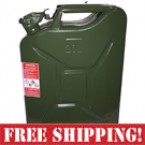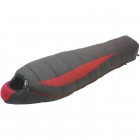FOOD
All information contained here is a courtesy of Ready - www.ready.gov
Consider the following things when putting together your emergency food supplies:
- Store at least a three-day supply of non-perishable food.
- Choose foods your family will eat.
- Remember any special dietary needs.
- Avoid foods that will make you thirsty.
- Choose salt-free crackers, whole grain cereals and canned foods with high liquid content.
Following a disaster, there may be power outages that could last for several days. Stock canned foods, dry mixes and other staples that do not require refrigeration, cooking, water or special preparation. Be sure to include a manual can opener and eating utensils.
Suggested Emergency Food Supplies
The following items are suggested when selecting emergency food supplies. You may already have many of these on hand.
- Ready-to-eat canned meats, fruits, vegetables and a can opener
- Protein or fruit bars
- Dry cereal or granola
- Peanut butter
- Dried fruit
- Nuts
- Crackers
- Canned juices
- Non-perishable pasteurized milk
- High energy foods
- Vitamins
- Food for infants
- Comfort/stress foods
Food Safety & Sanitation
Flood, fire, national disaster or the loss of power from high winds, snow or ice could jeopardize the safety of your food. Knowing what to do before and after an emergency can help you reduce your risk of illness and minimize the amount of food that may be lost due to spoilage.
Power outages can occur at any time of the year and it may take from a few hours to several days for electricity to be restored to residential areas. Without electricity or a cold source, food stored in refrigerators and freezers can become unsafe. Bacteria in food grow rapidly at temperatures between 40 and 140 °F, and if these foods are consumed, people can become very sick.
Do:
- Keep food in covered containers.
- Keep cooking and eating utensils clean.
- Keep garbage in closed containers and dispose outside, burying garbage if necessary.
- Keep your hands clean by washing them frequently with soap and water that has been boiled or disinfected.
- Discard any food that has come into contact with contaminated floodwater.
- Discard any food that has been at room temperature for two hours or more.
- Discard any food that has an unusual odor, color or texture.
- Use ready-to-feed formula, if possible, for formula-fed infants. If using ready-to-feed formula is not possible, it is best to use bottled water to prepare powdered or concentrated formula. If bottled water is not available, use boiled water. Use treated water to prepare formula only if you do not have bottled or boiled water. Breastfed infants should continue breastfeeding.
Don’t:
- Eat foods from cans that are swollen, dented or corroded, even though the product may look safe to eat.
- Eat any food that looks or smells abnormal, even if the can looks normal.
- Let garbage accumulate inside, both for fire and sanitation reasons.
Note: Thawed food usually can be eaten if it is still “refrigerator cold.” It can be re-frozen if it still contains ice crystals. To be safe, remember, “When in doubt, throw it out.”
For more information about food safety during an emergency, visit FoodSafety.gov.
All information contained here is a courtesy of Ready - www.ready.gov


 Sign Up to Receive Weekly Specials by Email
Sign Up to Receive Weekly Specials by Email
